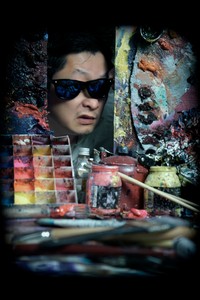
To Create a Vision: Jia Aili in Conversation with Philip Tinari
Jia Aili speaks with curator Philip Tinari about his arts education, his working process, and his desire to expand the talking points around painting.
Art is the light of the spirit. It enlightens the dust of the mind.
—Jia Aili
Jia Aili, a pioneering member of a new generation of Chinese artists, is best known for works embodying at once art historical knowledge and a drive to challenge painting’s existing forms and boundaries. Jia’s aim in his early work was to reflect a correspondence between the vulnerability of individuals and shifts in society as a whole. He has pursued and developed this idea through a wide-ranging practice variously incorporating abstraction, portraiture, fantastic imagery, scenes from daily life, and cultural motifs, skillfully blending past, present, and future.
Jia was born in Dandong in Northeast China in 1979. His childhood and teenage years witnessed the radical transformation of the country. He graduated from the Second Studio (New Representationalism) of the Lu Xun Academy of Fine Arts in Shenyang Tiexi District in 2004, and subsequently taught there from 2005 to 2007. After the teaching engagement, Jia moved to Black Bridge Village in Beijing, and his breakout solo exhibition The Wasteland opened in the same year, launching him onto the international scene.
In 2008, the year in which Beijing hosted the Olympic Games, Jia began to work on We Are from the Century (2008–11). This epic painting demonstrates his mastery of Socialist Realist technique and deep knowledge of the old masters, including the use of layers of thin, translucent color to generate an active dialogue between light and shadow, shape and space. The looser aspects of Jia’s brushwork make reference to the talismanic imagery of ancient Chinese Taoist drawings, serving his aim of exploring self-analysis in the context of the shared human condition. In subsequent works, Jia brings a fluid naturalism to bear, depicting sites of uncanny believability and evoking atmospheres of emotional heft. Characterizing his process as fundamentally intuitive, Jia applies formal logic to the summoning of a transcendent vision.
Over the past decade, Jia has continued to work at monumental scale, expanding on the dark, theatrical look of his earlier canvases through subtler and more complex coloration and structure. The evolution of his practice can be traced through a sequence of exhibitions at venues including the Singapore Art Museum (2012); Teatrino di Palazzo Grassi, Venice (2015); Centro de Arte Contemporáneo de Málaga, Spain (2017); and Gagosian, New York (2019). Among the twenty-nine paintings featured in the last of these was the four-panel Sonatine (2019), in which hard-edge polyhedrons drift across transcendent scenes connected by themes of disintegration, reflecting the artist’s latest breakthrough as a painter. Since 2018, Jia has maintained a studio in New York.
During the past few years, after having visited China’s borders with North Korea, Russia, and Mongolia, along parts of the Ussuri and Amur Rivers, and within the Greater Khingan Range, Jia began a series of mountain paintings. These works augment his inquiries into historical and literary themes with the properties of real locations, while acknowledging the Romantic landscapes of Caspar David Friedrich (1774–1840). Some of the canvases are conventionally framed; still others are shown under glass inscribed with improvised linear designs. These could be read as spiritual manifestations of the mountain’s ambiguity, and of the intersection of realism and abstraction. A third group incorporates larger, freestanding metal-and-glass frames that turn the works into site-specific installations. This series represents a departure from Jia’s previous style, but retains and expands its sense of transformation and reverie, again connecting the human experience to nature at large.
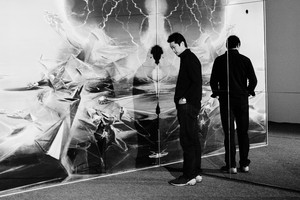

Jia Aili speaks with curator Philip Tinari about his arts education, his working process, and his desire to expand the talking points around painting.
This video presents a behind-the-scenes look at Jia Aili’s studio in Beijing. He elaborates on his in-progress works, the complexity of his compositions, as well as his philosophies of and motivations for painting.
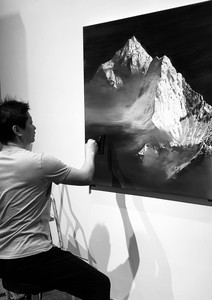
Curator Shen Qilan speaks with the artist about his latest works.
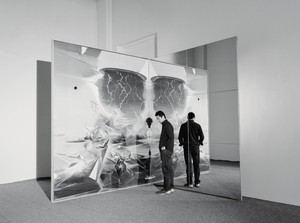
The artist speaks with the Quarterly about interrogating perceptions, questioning illusions, and the primacy of intuition.
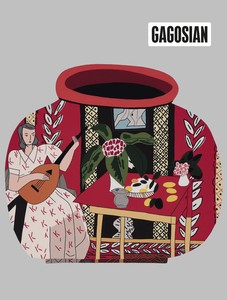
The Spring 2019 issue of Gagosian Quarterly is now available, featuring Red Pot with Lute Player #2 by Jonas Wood on its cover.
Request more information about
Jia Aili